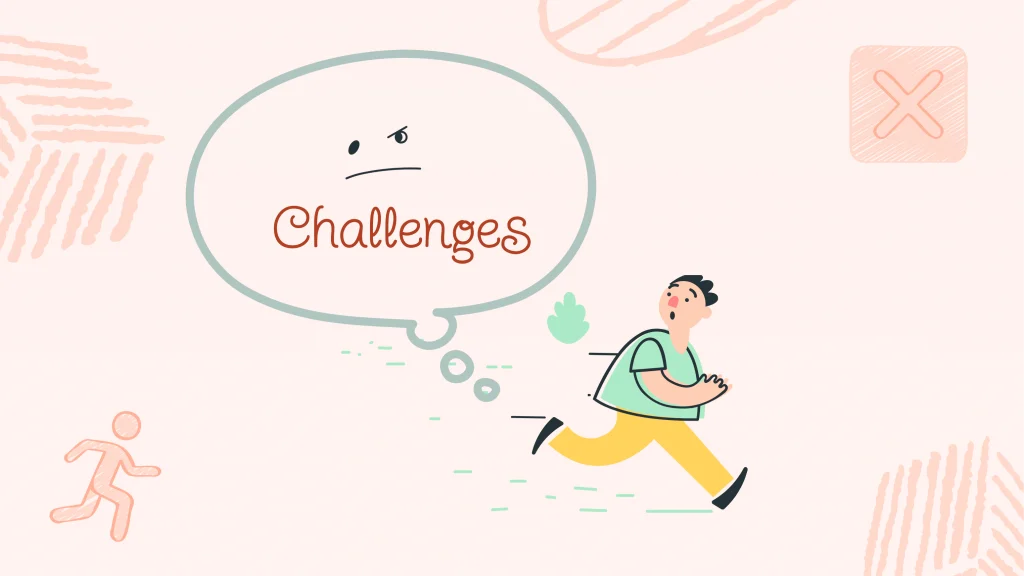The Tidal Wave of Gloom
Imagine a life where every morning brings a struggle so intense it feels like waking up under a dark, heavy blanket that refuses to lift. For many, this is not just an imagination but a reality where overwhelming sadness infiltrates every aspect of daily living.
This kind of profound sadness can make routine tasks feel insurmountable, turning the joy of life into a series of gray, lifeless moments. People affected may find themselves losing interest in activities they once loved, withdrawing from social interactions, and battling a constant sense of fatigue and worthlessness. The struggle is not just emotional; it’s a pervasive condition that clouds one’s ability to see the future with any hope.
Science behind Why Sadness Clings
This overwhelming sadness isn’t a sign of weakness or a lack of willpower; it’s a complex interplay of neurochemical and physiological processes. At the core, our brains manage emotions through neurotransmitters like serotonin, dopamine, and norepinephrine. When these chemicals are imbalanced, the regulation of mood falters, leading to persistent feelings of sadness or despair. It’s akin to a malfunctioning thermostat in the brain that fails to maintain emotional temperature, causing a perpetual cold winter of the soul. Neurologically, the brain’s limbic system, responsible for emotional processing, becomes hyperactive, while areas like the prefrontal cortex, which help with decision-making and mood regulation, become less active. This imbalance not only deepens the sense of sadness but also makes it harder to snap out of it, creating a self-sustaining cycle of despair.
Building Bridges Over Troubled Water
The journey from the depths of sadness to the shores of normalcy begins with small, manageable steps. One practical approach is the practice of mindfulness and meditation, which has been shown to help recalibrate the brain’s emotional responses. Mindfulness helps by fostering an awareness of the present moment, allowing individuals to observe their feelings and thoughts without judgment. This practice can gradually lessen the impact of negative emotions and thoughts, leading to improved mood and emotional resilience. Additionally, establishing a routine that includes physical activity can stimulate the brain’s production of mood-lifting neurotransmitters, providing a natural counter to the neurochemical deficits contributing to sadness. The key is to start small, with activities that are feasible and gradually build upon them, creating a scaffold of positive habits and responses.
Proactive Strategies to Combat Emotional Drain
In navigating overwhelming sadness and promoting mental wellness, individuals can adopt practical strategies to improve their immediate circumstances and foster long-term resilience:
- Seek Professional Support – Consultation with mental health professionals, such as therapists, counselors, or psychiatrists, can provide personalized assessment, psychotherapy, and medication management if needed. Professional support offers guidance, validation, and evidence-based interventions tailored to individual needs.
- Practice Self-Care – Prioritize self-care activities that promote physical, emotional, and mental well-being. Engage in regular exercise, maintain a balanced diet, prioritize adequate sleep, and incorporate relaxation techniques such as mindfulness, deep breathing, or meditation into daily routines.
- Build Supportive Relationships – Cultivate connections with supportive friends, family members, or community groups. Openly communicate feelings, seek emotional support, and participate in social activities that foster a sense of belonging and connection.
- Challenge Negative Thinking – Challenge negative thought patterns and cognitive distortions by practicing cognitive-behavioral techniques. Identify and reframe irrational beliefs, practice gratitude, focus on strengths and achievements, and develop adaptive coping strategies for managing stress and adversity.
- Engage in Meaningful Activities – Pursue activities that bring joy, fulfillment, and a sense of purpose. Set realistic goals, engage in hobbies or interests, volunteer, or explore creative outlets as ways to cultivate positive experiences and enhance overall life satisfaction.
Subscribe to newsletter
Get your Gut Health Starter Guide right now.
Elevate your Tuesdays with practical, science-backed wisdom propelling you forward on your gut health journey.

Light After the Storm
Michael’s world was once painted in monochrome, each day blending into the next under a veil of persistent sadness. Mornings were battles, and smiles felt like distant memories. Yet, within this tapestry of gloom, a thread of change began to weave its way through. Michael, skeptical but desperate for a spark of color in his life, started with small steps: five minutes of meditation at dawn and an evening walk as the sun set.
“I never imagined that such simple activities could crack the shell of my sadness. At first, these were just motions, robotic and devoid of meaning. But as days turned into weeks, a transformation unfolded. Meditation brought me a sense of calm I hadn’t felt in years, anchoring me in the present and teaching me to navigate my emotions like waves, observing them rise and fall without getting swept away.
My evening walks became sacred, a time when the rhythmic steps and fresh air cleared the mental fog, reconnecting me with the world around me. It was during these walks that I gradually started to see the hues of life again—the golden warmth of the sunset or the crisp green of the leaves.
Half a year later, I realized I was no longer the same person who viewed life through a grayscale lens. My relationships deepened, my work flourished, and I rediscovered passions I thought were extinguished. It was as if I had been sleepwalking through life, and these practices nudged me awake.
This journey taught me that healing and renewal are not instantaneous but a gradual reawakening to life. Mindfulness and physical activity were my lifelines, pulling me out of the depths of sadness into a world vibrant with possibility and hope.”
Michael’s narrative is a powerful reminder that the path from overwhelming sadness to rejuvenation is both personal and universal in its steps of healing. Through consistent mindfulness and physical activity, he not only navigated his way out of despair but also rekindled a zest for life, proving that renewal is within reach, even from the storm’s darkest center.


















